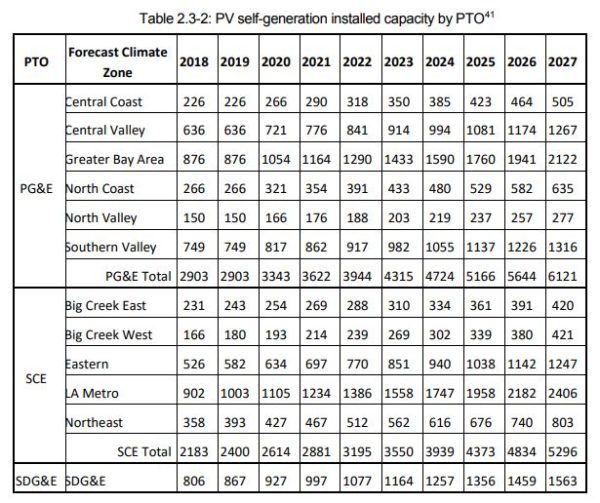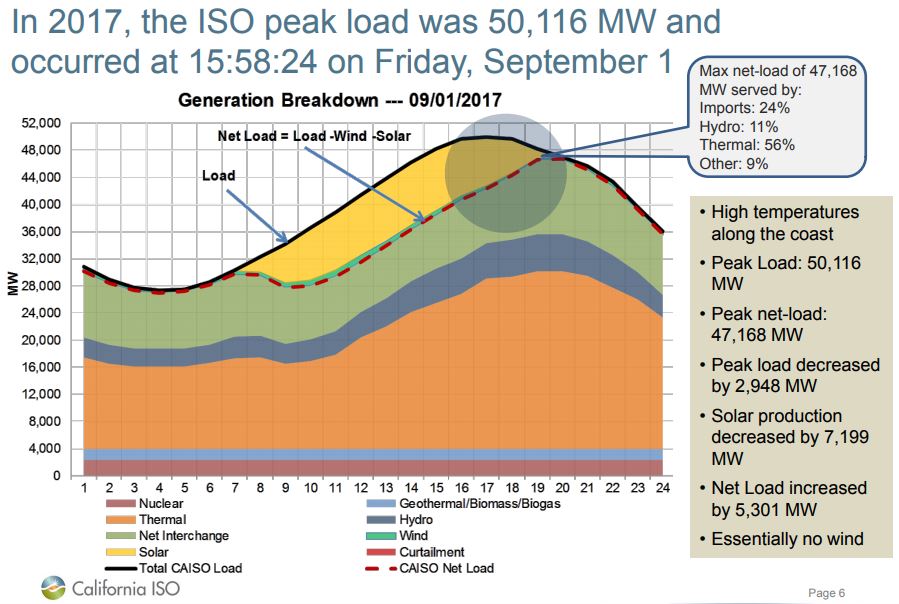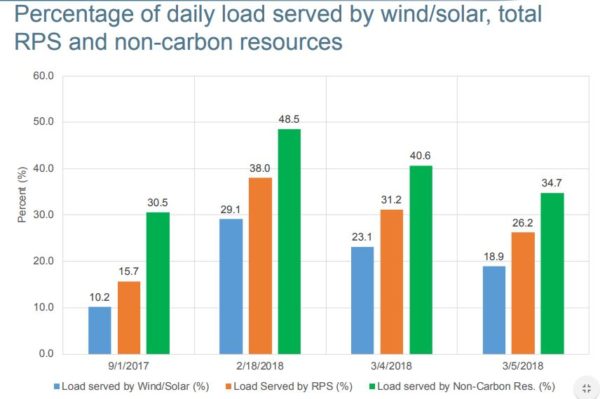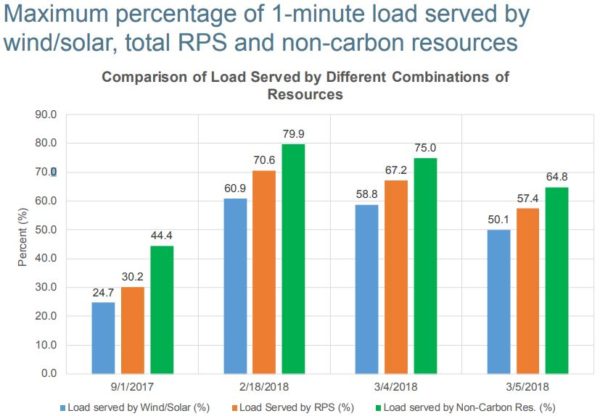Last week California’s grid operator signed off on the state’s 2017-2018 Transmission Plan, which approved 17 new transmission projects combined at a cost of nearly $271 million.
This may seem like a large number, however 20 transmission projects were canceled and 21 were revised due to energy efficiency and residential solar power altering local area load forecasts. The projected savings from these changes is approximately $2.6 billion.
The majority of the projects were located in the service area of utility Pacific Gas and Electric (PG&E), while two of the canceled projects were located in San Diego Gas & Electric territory. PG&E recently announced hitting California’s 33% renewable goal in 2017, and including nuclear and hydroelectric power 78.8% of its electricity came from GHG free sources.
In fact, last year California’s three large investor-owned electricity utilities announced that they will reach 50% renewable energy by 2020 – far ahead of the 2030 Renewable Portfolio Standard goal.

The report suggested that by 2027, there could be almost 13 GW of behind-the-meter solar, with nearly 6 GW installed today. Statewide, self-generation is projected to reduce peak load by more than 8 GW by 2027.
The report includes a section on the contribution of solar on the operation of the grid, Briefing on renewables and recent grid operations. A few pieces of data from the report:
- September 1, 2017 – peak demand of 50,116 MW
- February 18, 2018 – minimum net load 7,149 MW
- March 4, 2018 – maximum 3-hour upward ramp 14,777 MW
- March 5, 2018 – maximum solar production 10,409 MW
As an example of what the grid will look like with higher penetrations of renewable energy, on February 18th 48.5% of all electricity came from GHG-free sources, with solar and wind peaking at 60.9% of electricity demand.
Another eye opening slide showed the contributions of solar to the grid on September 1, 2017:

The daily peak was shifted from approximately 5:30 PM, till almost 9 PM. The state’s instantaneous peak load was lowered by almost 3 GW.
With the combination of solar reducing peak demand by 6% and behind-the-meter resources minimizing transmission spending by $2.6 billion, it is clear that renewable energy is making for a more efficient grid in California.
A key takeaway is that in contrast to utility claims that distributed solar under net metering imposes a net cost on other ratepayers, it is clear that it in addition to costs it also provides significant benefits. This makes for a more complex cost-benefit calculation, and it is possible that the reverse is true – that net-metered solar is providing benefits to other ratepayers in California, particularly since the shift to net metering 2.0.
This is of course, before we consider externalities such as broader pollution, health effects of air pollution and global climate change. California has reduced GHG emissions and gas use in its electricity sector every year for the past three years, while the penetration of renewable energy grows.
This content is protected by copyright and may not be reused. If you want to cooperate with us and would like to reuse some of our content, please contact: editors@pv-magazine.com.









By submitting this form you agree to pv magazine using your data for the purposes of publishing your comment.
Your personal data will only be disclosed or otherwise transmitted to third parties for the purposes of spam filtering or if this is necessary for technical maintenance of the website. Any other transfer to third parties will not take place unless this is justified on the basis of applicable data protection regulations or if pv magazine is legally obliged to do so.
You may revoke this consent at any time with effect for the future, in which case your personal data will be deleted immediately. Otherwise, your data will be deleted if pv magazine has processed your request or the purpose of data storage is fulfilled.
Further information on data privacy can be found in our Data Protection Policy.